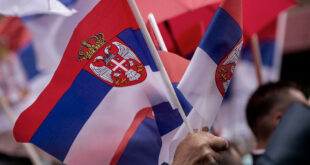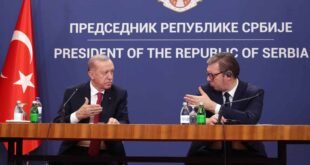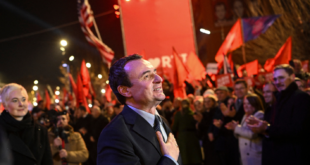Bosniak political leaders in Serbia are increasingly concerned that a new law on regional reorganisation will divide their six Sandzak municipalities into two, thereby dilute their minority rights and undermine their attempts to develop in synch as a region.
They argue that dividing their municipalities into two rather than one region will weaken their positions a minority in Serbia. In so doing, they also say that the government is reneging on an earlier promise to include the region into one territorial unit, a condition by which the Bosniak parties entered Serbia’s governing coalition in the first place.
Failure by Belgrade to listen to their demands will force them to re-examine their cooperation within Serbia’s ruling coalition, they say.
Some feel so strongly that they are threatening to campaign for a referendum in order to ensure that all municipalities are in the same territorial unit.
“In this context, we have asked Prime Minister Mirko Cvetkovic to change the decison at the next government session placing these six Sandzak municipalities into one region… in order to facilitate the Bosniaks who have inhabited the area for centuries, practice their rights,” said parliamentarian from the Bosniak List for European Sandzak, Esad Dzudzevic.
He says an initiative to call a referendum would be in accordance with law and constitution. He is urging residents of Novi Pazar and Tutin to opt for the annexation of their municipalities, so that they can join the other Sandzak municipalities and belong to the same territorial unit.
“I do not insist on Novi Pazar to be the administrative center of the area, it can be Prijepolje. Also, we suggest to make official the use of both names – Sandzak and Raska region,” Dzudzevic said.
The proposal to divide the six municipalities into two units has united the two opposing Bosniak political parties, led by Rasim Ljajic and Sulejman Ugljanin.
The leader of the Social Democratic Party of Serbia, Ljajic, says that the merging of the six municipalities (Novi Pazar, Tutin, Sjenica, Nova Varos, Priboj and Prijepolje) into a region makes economic sence, since these municipalities are among Serbia’s most underdeveloped.
“There is no word on ethnic and political issues in our request, it’s about economy. For example, the construction of roads will be much easier if these six municipalities are part of a region,” Ljajic said stressing that the Sandzak municipalities have a similar infrastructure, as well as the lowest number of asphalt roads in Serbia.
Bosniaks make up the majority in Novi Pazar, Tutin and Sjenica, while in Nova Varos, Prijepolje and Priboj they are in the minority. This part of Serbia is called Sandzak by Bosniaks and Raska area by Serbs.
Serbs, however, fear that grouping the six municipalities into one region will strengthen the position of the Bosniaks at their expense. “We do not want any kind of centre in Novi Pazar, nor agree on the formation of a Sandzak area! Serbs are strongly against it… We will organise protests, block roads, on the railways… and strike in front the government building in Belgrade,” Priboj’s mayor, Lazar Rvovic, warned.
The new division of Serbia foresees seven statistical regions with Sjenica, Nova Varos, Prijepolje Priboj to belong to the western, and Novi Pazar and Tutin to the central region. Its aim is to improve economic development by grouping less developed municipalities with more developed ones.
Representatives of the government’s Institute for Statistics, which created the new map, claim it was not possible to put all six municipalities in the Sandzak region, as that would make the region far larger than the other regions. They say the borders are drawn taking into account the population size, geography, natural, cultural and historical heritage.
 Eurasia Press & News
Eurasia Press & News



